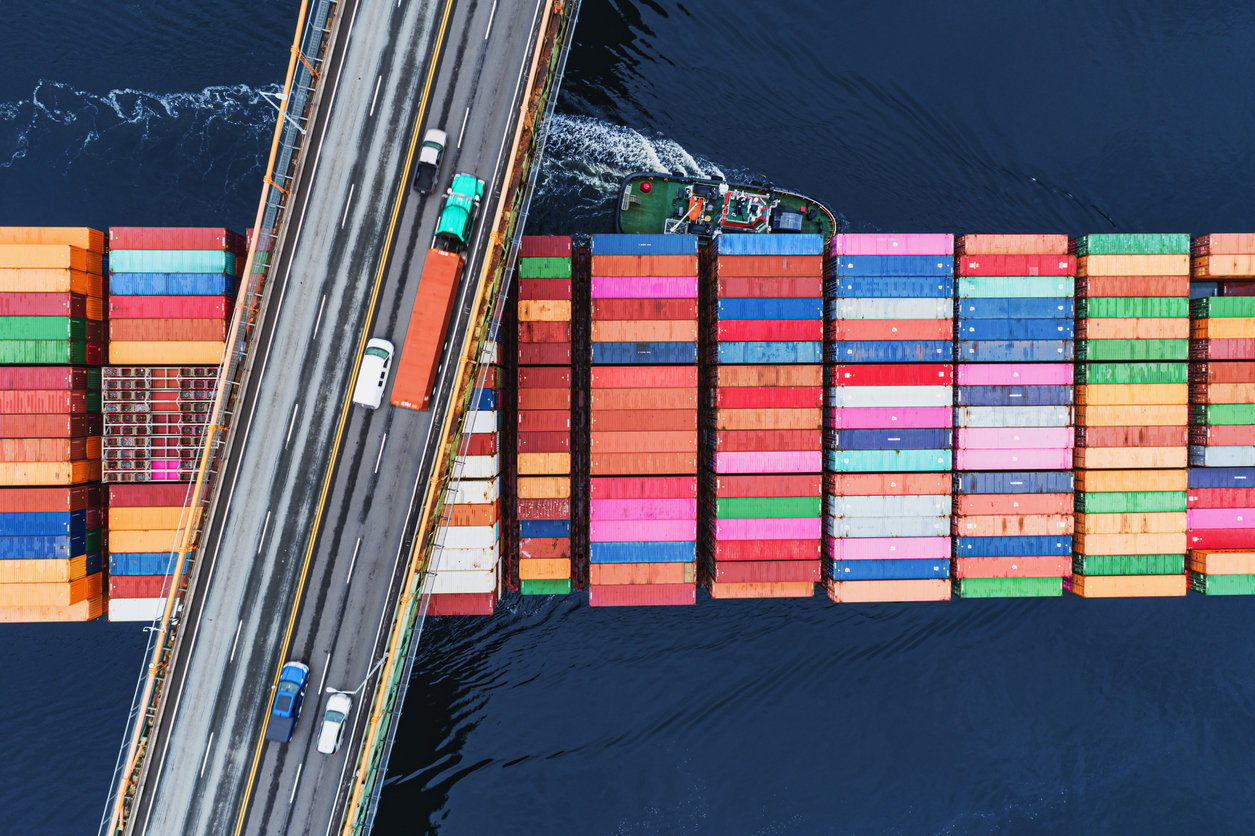Global supply chains are critical in making manufacturers and industry sectors more efficient, productive, and profitable. They reduce costs and encourage business enterprises to expand into international and emerging markets for critical resources, labor, and new consumers.
Supply chain managers are tasked with the management of flows upstream (inputs) and downstream (post-manufacture through distribution and consumption), and disturbance is possible at any given linkage or stretch along the chain. Weather events, labor shortages, fluctuating demand, border conflicts, and trade and tariff issues; these are just a few of the many challenges and considerations that contribute to an ever-shifting global business landscape for which supply chain leaders must assess and manage.
Wicked problems like climate change, acute disasters, and global pandemics can cause systemic disruptions to global supply chains and put a spotlight on our interdependence for goods and services and expose threats and vulnerabilities.
With Covid-19 for example, there was a glaring recognition that we are often underprepared for major supply chain disruptions. At the same time, what emerged was a dedicated commitment to improvement across companies and sectors to prevent such blockages in the future. That relies on the integration of supply chain risk management to help leaders anticipate shifts, adapt or pivot more quickly, and improve supply chain resilience in the face of uncertainty and adversity.
5 Steps to Better Manage Supply Chain Risk
Below are five steps supply chain managers and integrated supply chain teams can implement for better supply chain risk management.
1. Map Your Risk at Every Level
Companies with global value chains need to identify, assess, and track key sources of supply chain risk. These risks might relate to political or economic instability; supplier disruption; environmental impacts on the supply chain (or the supply chain’s impacts on the environment); climate change; forced labor and other labor risks; as well as other factors.
As part of supply chain risk assessment, teams should invite input from diverse stakeholders to help their organizations identify and evaluate risk exposure at different tiers and from different angles. Some of the most important considerations in mapping risks can be identified by probing the following questions:
- Who are all your suppliers, vendors, and partners from raw materials through end-of-life logistics, where are they located, and who are their subcontractors?
- What product or service are they providing, and how important is that asset to your organization?
- Do you have more than one supplier to cover each need?
- Are these suppliers vulnerable to the same supply shocks and disruptions?
- What are the information flows between your organization and a supplier (and how important is the value of that information)?
- In what ways have your suppliers minimized risks through external certifications, audits, verifications, and systems?
Critical, here, are investments in supply chain transparency and due diligence, to shine light on parts of complex supply chains—and associated risks—that are often hidden.
2. Prioritize Risk Mitigation Projects
After mapping your supply chain risks, prioritize them so that you can focus on the risks with the highest potential to derail your operations. Score each risk based on its likelihood, its severity, the timescale, and your company’s ability—alone or through partnership—to do something about it.
Risk levels are typically defined as:
- Tolerable risk is considered to have limited or no harm to your supply chain; the probability of occurrence is expected to be sufficiently low to cause no concerns.
- Low risk is likely to have minor adverse effects on your supply chain; the probability of occurrence is expected to be low enough to cause minimal concerns.
- Medium risk is defined as impacting the supply chain in some way, be it procurement, cost, or timeline. The chance of it occurring is high enough to warrant close control of risk factors contributing to it.
- High risk is considered to have a high likelihood of happening, and the outcome will harm your supply chain either via procurement of inputs, budget, distribution, or timetable.
- Intolerable risk is identified as having a very high probability of happening and high criticality to your supply chain. The resulting consequences on procurement, cost, schedule, and output of goods or services would significantly harm the budget, timeline, and production.
A consistent scoring methodology will make it easier to prioritize action and direct your investments accordingly. Once you have confirmed the rankings and vetted the priority of each risk, you can start developing strategies and initiatives to shore up the vulnerabilities that are most likely to cause problems over the near- and long-term.
3. Collaborate with your Supplier Network, and Beyond
If you are relying on one vendor for key components or raw materials, your risk of a supply chain disruption is higher than if you have built relationships with reliable secondary suppliers and manufacturers.
Expanding your supplier network is a key strategy for reducing risk (and also an opportunity to build diverse new players and innovative solutions into your value chain).
Next, engage your suppliers as true partners in identifying and managing supply chain risks. By collaborating across your supply chain to improve economic, social, and environmental conditions, you improve its resiliency—and your company’s.
Strategic partnerships with your suppliers; cross-sector partnerships with international development actors; and pre-competitive collaboration with industry players with overlapping supply chains can help you better tackle key supply chain risks.
4. Review Supply Chain Risks Regularly
Your supply chain risk management plans are only as good as they are current. Set up a risk governance team and regular reviews to keep abreast of internal and external changes that affect your company’s risk exposure.
Build and tap partner networks—with your suppliers, technical experts, and key local stakeholders in target geographies—to better understand changing risk landscapes.
5. Build Risk Awareness into Company Culture
Supply chain shortages and bottlenecks related to the COVID-19 pandemic have made it clear that risk management is no longer the responsibility of supply chain managers alone. Instead, risk identification and mitigation need to be part of the company mindset.
Another key shift is in how a company sees its investments in supply chain sustainability. Initiatives that were once almost exclusively the purview of the sustainability team are now recognized as core business investments for risk mitigation and a resilient supply chain.
Working Toward Enhanced Supply Chain Risk Management
As the world becomes more complex and our problems become more challenging (and wicked), we can anticipate that supply chain risks will only increase and become more complicated, too.
Fortunately, leaders can strengthen supply chain resilience by embracing proactive risk management strategies and seeking out strategic partners to mitigate risks before they become serious issues.
At Resonance, we help global companies develop strategy and partnerships to tackle deep-seated and systemic issues and navigate supply chain risks in emerging markets. If you’re interested in learning more about how to build a resilient and sustainable supply chain, contact us.
Editor’s Note: This post has been updated for accuracy and current best practices.



